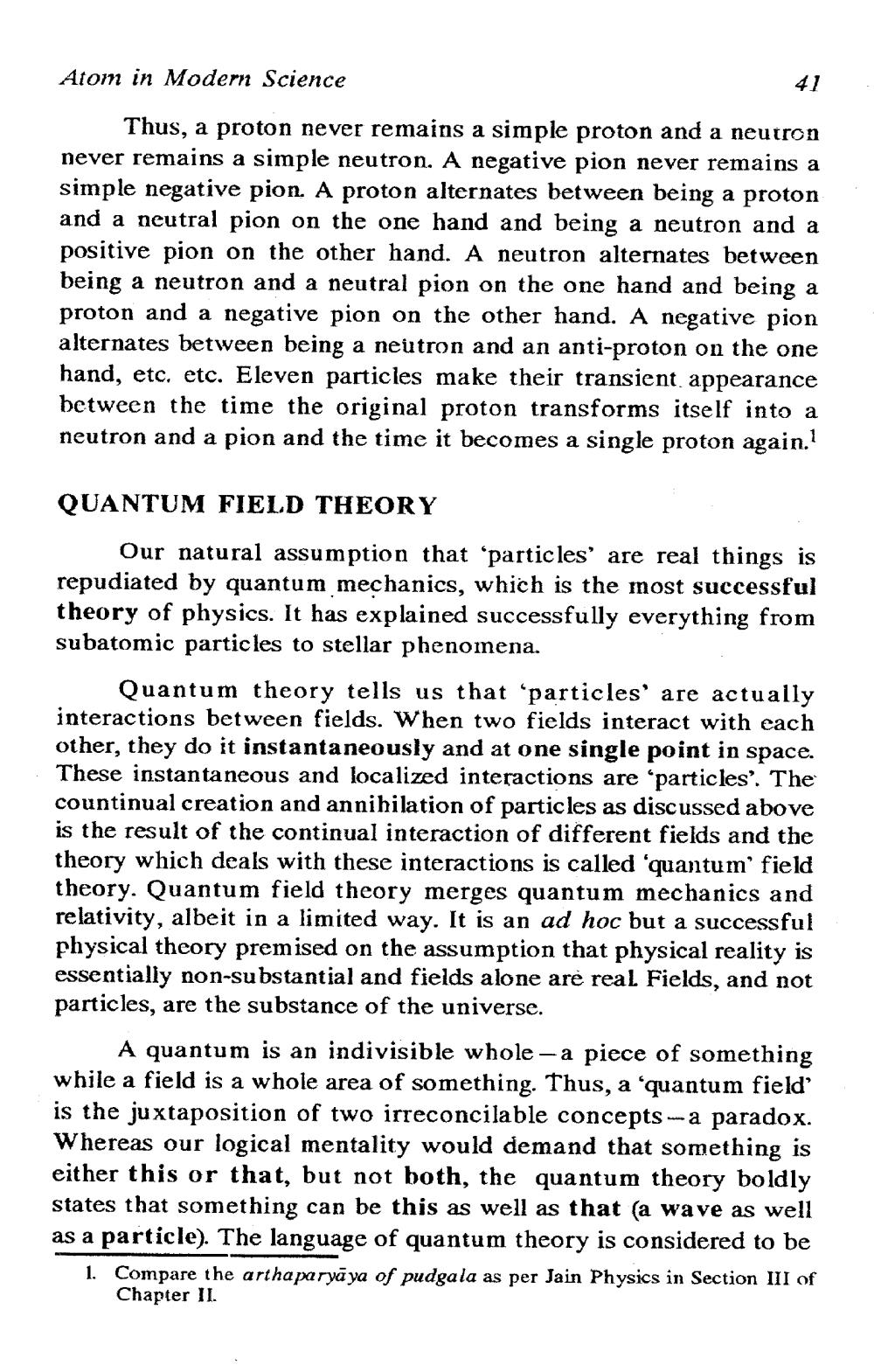________________
Atom in Modern Science
Thus, a proton never remains a simple proton and a neutron never remains a simple neutron. A negative pion never remains a simple negative pion. A proton alternates between being a proton and a neutral pion on the one hand and being a neutron and a positive pion on the other hand. A neutron alternates between being a neutron and a neutral pion on the one hand and being a proton and a negative pion on the other hand. A negative pion alternates between being a neutron and an anti-proton on the one hand, etc, etc. Eleven particles make their transient appearance between the time the original proton transforms itself into a neutron and a pion and the time it becomes a single proton again.
QUANTUM FIELD THEORY
Our natural assumption that 'particles' are real things is repudiated by quantum mechanics, which is the most successful theory of physics. It has explained successfully everything from subatomic particles to stellar phenomena.
Quantum theory tells us that 'particles' are actually
ns between fields. When two fields interact with each other, they do it instantaneously and at one single point in space. These instantaneous and localized interactions are “particles'. The countinual creation and annihilation of particles as discussed above is the result of the continual interaction of different fields and the theory which deals with these interactions is called 'quantum' field theory. Quantum field theory merges quantum mechanics and relativity, albeit in a limited way. It is an ad hoc but a successful physical theory premised on the assumption that physical reality is essentially non-substantial and fields alone are real Fields, and not particles, are the substance of the universe.
A quantum is an indivisible whole - a piece of something while a field is a whole area of something. Thus, a 'quantum field' is the juxtaposition of two irreconcilable concepts -a paradox. Whereas our logical mentality would demand that something is either this or that, but not both, the quantum theory boldly states that something can be this as well as that (a wave as well as a particle). The language of quantum theory is considered to be 1. Compare the arthaparyāya of pudgala as per Jain Physics in Section III of
Chapter II.




